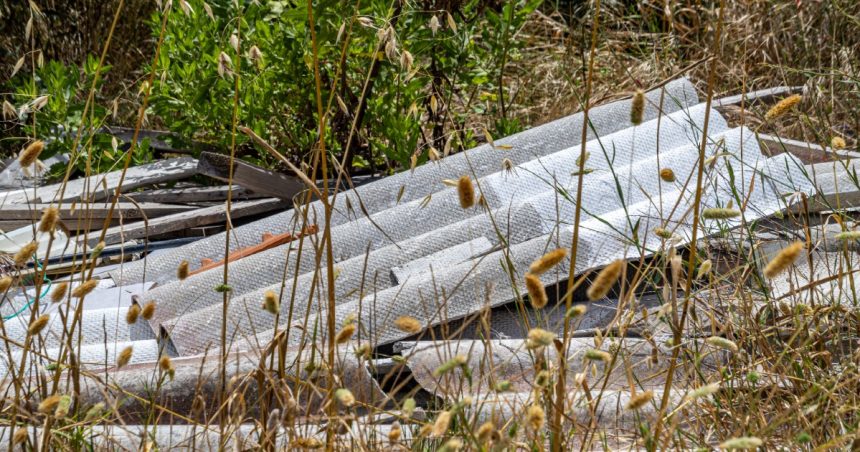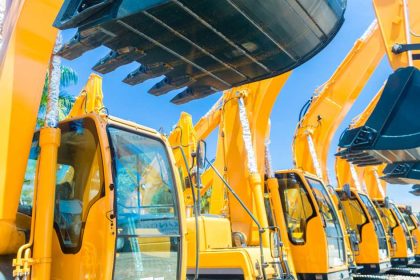A surge in asbestos dumping incidents across the country has led to a spike in convictions and hefty fines, with some offenders slapped with penalties of up to $200,000.
Environmental courts in South Australia and New South Wales have seen an increase in asbestos dumping cases in recent weeks, as fly-tippers face court for carelessly discarding the deadly building material.
Nearly half a million dollars in fines have been handed out in response to illegal dumping at just three locations across Adelaide and Sydney as the government attempts to send a strong deterrent against further dumping.
Last month, Liverpool Local Court fined a man $200,000 after the NSW Environment Protection Authority (EPA) conducted a covert surveillance operation that captured trucks illegally dumping building waste at a property in Rossmore.
The EPA used drones to catch Maher El Masri, organising trucks containing construction waste to the property, which was then dispersed across its land with an excavator.
Alarmingly, the occupier at that exact property was convicted of the exact same offence in 2021 and was already fined $180,000.
Undercover drones uncover deadly dumping
EPA Executive Director Regulatory Operations Jason Gordon said the EPA’s extensive investigation, launched in 2019, was a success, with two individuals held to account for illegal activities at the property.
“Following reports from Liverpool City Council and the community, we started a covert operation in 2019, and our drones caught the trucks dumping construction waste at the site, which was then spread across the property with an excavator.
“Officers carried out a search of the property and collected samples from the waste, which was found to contain asbestos, which is completely unacceptable.”
Elsewhere, Mohamad Bader was fined $100,000 after failing to comply with an EPA clean-up directive for 950 tonnes of asbestos-contaminated waste at a home in Leppington.
He has now been given six weeks to lawfully remove the waste or possibly face further penalties.
Meanwhile, an Adelaide man, Shane Matthew Blight, was fined $31,000 after he was convicted of illegally dumping a truckload of asbestos-containing building material at a conservation park.
He alleged he was forced to dump the material so it could fit on a tow truck after his vehicle became stuck while making a U-turn after going in the wrong direction.
The four tonnes of construction material including cement sheeting containing asbestos, was left at the site and uncovered by authorities weeks later.
However, the judge dismissed his claim “on the balance of probabilities”.
NSW EPA executive director of regulatory practice and services Stephen Beaman says illegally dumping asbestos risks environmental and community safety.
“We take our role of protecting the environment and health of communities very seriously. Illegal dumping threatens the health of our waterways, parklands and beautiful landscapes, and in the case of asbestos, the health of our communities,” he said.
“Illegal dumping will not be tolerated. Individuals who choose not to dispose of waste correctly and ignore clean-up notices will face strong regulatory action and large fines.”
How to correctly dispose of asbestos-containing materials:
As a Class A hazardous material, There are strict legal requirements for the safe transporting, disposal and dumping of asbestos, which can have significant health consequences if ignored.
The hazardous material contains deadly microscopic fibres, which can be inhaled, causing severe respiratory diseases, including lung cancer, mesothelioma, and asbestosis.

Illegal dumping can put those transporting the material and those who encounter it at significant risk of developing one of the abovementioned conditions later in life.
Due to its high-risk factors, Build-it only recommends using a licenced professional to remove suspected asbestos-containing material from your home.
Alternatively, there are courses available to educate DIY lovers and home renovators on how to safely remove asbestos themselves. However, varying state restrictions apply regarding the source, type, and weight of asbestos that homeowners can remove themselves.
Whether you use a licensed asbestos removalist or remove the asbestos yourself, you must be sure it goes to a licensed landfill that accepts asbestos. These landfill sites can be found and filtered online via your local council website.
Most importantly, it is essential to wear the correct PPE equipment when removing, transporting, or disposing of asbestos. This includes wearing disposable clothing or coveralls, boot covers, and using a half-face filter respirator fitted with a class P1 or P2 filter cartridge or a class P1 or P2 disposable respirator appropriate for asbestos.








